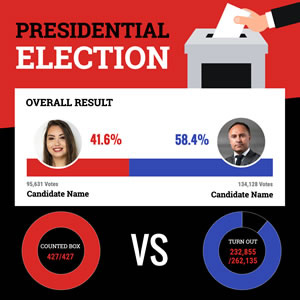...
Categories
Chart
Bar
Pie
Table
Sitemap
Swot Analysis
Area
Flowchart
Line
Map
Column
Organizational
Venn Diagram
Card
Wedding
Baby
Easter
Anniversary
Graduation
Greeting
Congratulations
Thank You
Valentines Day
Birthday
Halloween
Mothers Day
Thanksgiving
Fathers Day
Invitation
Business
New Year
Christmas
Halloween
Fathers Day
Baby Shower
Christening
Mothers Day
Thanksgiving
Engagement
Graduation
Party
Easter
Anniversary
Poster
Birthday
Music
Travel
Movie
Animal & Pet
Party
Motivational
Environmental Protection
Industrial
Fashion & Beauty
Kids
Non-profit
Exhibition
Law & Politics
Art & Entertainment
Sale
Holiday & Event
Business
Coronavirus
Sports & Fitness
Search: {{local.search_error_key}}
Search: {{local.search_subcategory}} in {{local.search_category}}
Sorry, no matches found. Please try again with different words or browse through our most popular templates.

Preview
Customize
Payment Methods Pie Chart

Preview
Customize
Wildlife Population Line Chart

Preview
Customize
Nonprofit Organizations Pie Chart

Preview
Customize
Customer Survey Pie Chart

Preview
Customize
Budget Planning Pie Chart

Preview
Customize
Monthly Expenses Pie Chart

Preview
Customize
Company Budget Planning Pie Chart

Preview
Customize
Favorite School Subject Pie Chart

Preview
Customize
Population Data Pie Chart

Preview
Customize
Market Share Pie Chart

Preview
Customize
Favorite Ice Cream Flavor Pie Chart

Preview
Customize
Energy Consumption Pie Chart

Preview
Customize
Transportation Usage Pie Chart

Preview
Customize
Agriculture Exports Column Chart

Preview
Customize
Air Pollution Proportion Pie Chart

Preview
Customize
English As Official Language Map

Preview
Customize
Pet Ownership Pie Chart

Preview
Customize
Election Results Pie Chart

Preview
Customize
House Construction Cost Pie Chart

Preview
Customize
Critical Raw Materials Map
Cancel
Customize
